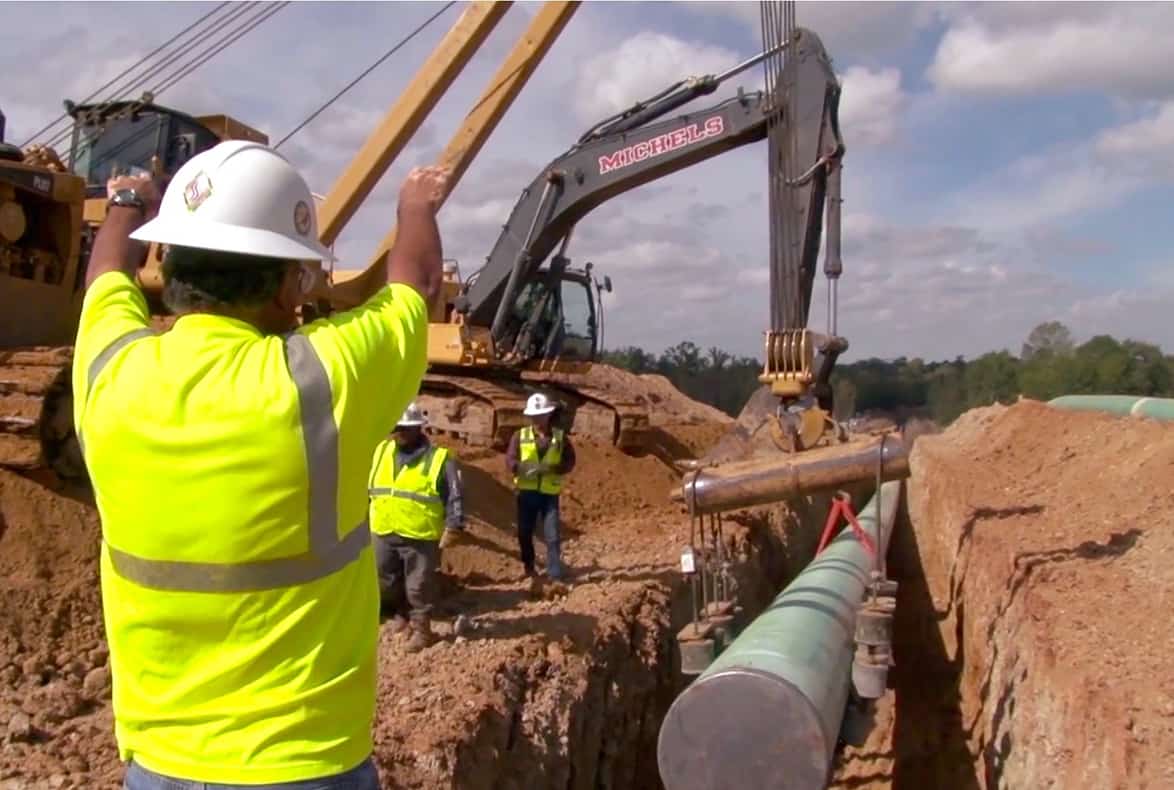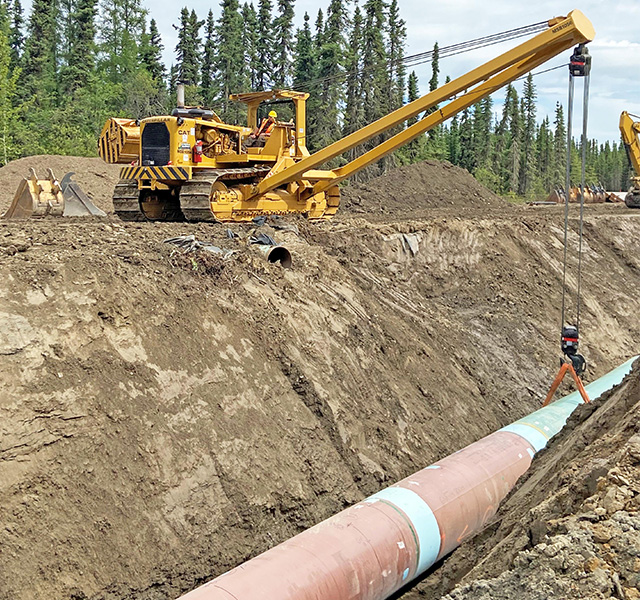The Risks of Self-Installing Without Help From Creek Pipe Company
Wiki Article
What You Must Understand About Pipe Trenching Providers: A Comprehensive Overview of Available Options
Pipe trenching solutions are essential for the setup and upkeep of underground utilities. They involve numerous techniques customized to certain needs and atmospheres. Recognizing these techniques is key for effective project implementation. Each choice provides its own set of benefits and obstacles. As the need for effective utility management rises, recognizing what to consider when selecting a trenching service comes to be crucial. What elements should one focus on to assure success?Understanding Pipe Trenching: What It Is and Why It Issues
Frequently neglected, pipeline trenching is a vital procedure in numerous construction and energy tasks. This strategy involves digging deep into slim trenches to help with the setup of pipelines for water, gas, sewer, and telecommunications. The significance of pipe trenching exists in its role in ensuring that these crucial systems are correctly incorporated right into framework, enabling the secure and reliable distribution of necessary services.Proper trenching is important for keeping the honesty of pipelines and decreasing dangers related to dirt disintegration and cave-ins. It additionally permits effective evaluations and maintenance of underground energies. Furthermore, recognizing the neighborhood policies and ecological factors to consider is vital, as incorrect trenching can result in pricey hold-ups and lawful problems. Eventually, pipeline trenching serves as the fundamental action that sustains various building endeavors, making it a substantial facet of contemporary framework growth.
Common Trenching Techniques for Underground Energies
In the domain of below ground utilities, numerous trenching techniques play an important duty in installment and maintenance - Creek Pipe contact. The open-cut trenching approach, directional boring strategy, and hydro excavation process each offer distinct benefits relying on the specific job demands. Recognizing these methods is essential for efficient and reliable utility monitoringOpen-Cut Trenching Technique
Open-cut trenching is a widely utilized technique for installing underground energies, specifically when the deepness and width of the trench allow for effective gain access to. This method includes excavating a trench along the proposed course of the utility, providing straight visibility and accessibility for installation. It is particularly beneficial for projects that call for comprehensive excavation, as it facilitates quick setup and assessment. However, it additionally requires cautious planning to lessen disruption to the surrounding area, consisting of website traffic and existing frameworks. Open-cut trenching is most reliable in open rooms where the soil conditions are positive, however it might be limited in city settings as a result of the existence of existing energies and other underground challenges.Directional Boring Strategy

Hydro Excavation Refine
How does hydro excavation stand apart amongst usual trenching methods for underground energies? Hydro excavation uses high-pressure water and vacuum technology to securely remove soil, permitting accurate digging around delicate underground energies. This method decreases the danger of destructive existing facilities contrasted to conventional mechanical excavation. By employing water to loosen up the soil, hydro excavation provides a much less invasive strategy, lowering the capacity for dirt compaction and making sure a cleaner worksite. Furthermore, the procedure improves presence throughout excavation, boosting total precision and effectiveness. Hydro excavation is specifically useful in urban locations where energy lines are densely loaded, making it a favored choice for specialists focused on safety and security and precision in underground jobs.Benefits of Trenching Solutions
While numerous techniques exist for mounting underground utilities, trenching solutions offer distinct benefits that make them a favored selection for many jobs. One significant advantage is the cost-effectiveness of trenching, as it usually needs less customized tools contrasted to options like hydro excavation. This commonly leads to lower labor and functional expenses. Furthermore, trenching can accommodate a large array of utility kinds, consisting of water, drain, and gas lines, providing versatility for contractors.Moreover, trenching enables for effective accessibility to numerous lines in a single excavation, minimizing disturbance to the surrounding location. The process likewise makes it possible for precise installation and repair, which is essential for sticking to governing requirements and guaranteeing long-lasting dependability. Inevitably, trenching can be carried out fairly promptly, reducing project timelines and permitting faster solution reconstruction. These advantages collectively make trenching solutions a useful alternative for lots of below ground utility tasks.Disadvantages and Obstacles of Trenching
In spite of the numerous benefits of trenching solutions, there are significant negative aspects and challenges that should be thought about. One substantial challenge is the possibility for dirt instability, which can cause cave-ins, posturing risks to workers and tools. Additionally, trenching can interfere with existing energy lines, necessitating careful planning and sychronisation to prevent solution disturbances. The process can also be time-consuming, especially in urban locations where space is limited and access is restricted. Additionally, trenching may need comprehensive authorizations and regulative conformity, including intricacy and possible delays to jobs. Ecological worries, such as dirt disintegration and damage to regional ecological communities, can occur from incorrect trenching methods. The expenses connected with trenching, consisting of labor and tools, can intensify if unanticipated issues emerge throughout the project, making it necessary for stakeholders to evaluate these obstacles against the advantages when taking into consideration trenching services.Secret Aspects to Take Into Consideration When Choosing a Trenching Service
Picking the ideal trenching solution can substantially influence the success of a project. Numerous crucial variables need to be assessed to ensure an ideal selection. The firm's experience and expertise in trenching operations are important; a well-established service with a solid track record is normally much more dependable. Next off, examining the equipment utilized is fundamental, as modern equipment can boost effectiveness and precision. Additionally, it is significant to think about the variety of services supplied, including excavation depth and dirt kind handling, to validate they satisfy specific task requirements.Another variable to review is the firm's reputation; consumer testimonials and reviews can give insights right into previous efficiency. In addition, obtaining in-depth quotes that lay out prices and timelines will certainly aid in budget plan monitoring. Validating compliance with local laws and sector requirements is crucial for preventing prospective lawful issues. By reviewing these variables, customers can make an informed decision when picking a trenching service.Safety Steps in Pipe Trenching
In pipe trenching, precaution are critical to guaranteeing employee security and site honesty. Trick elements include the use of personal safety equipment, extensive excavation website assessments, and well-defined emergency feedback procedures. Implementing these actions significantly decreases risks related to trenching procedures.Individual Safety Devices
Safety in pipeline trenching greatly relies on the correct use individual protective tools (PPE) Workers must wear tough hats to safeguard against dropping items, along with high-visibility vests to enhance their presence on-site. Steel-toed boots are vital for foot defense versus heavy devices and products. Additionally, handwear covers are very important for hand safety and security, particularly when taking care of rough or sharp items. Respirators might also be required in environments with dust or unsafe fumes. Eye security, such as safety goggles, must be put on to secure against debris. Listening to protection is necessary in loud work atmospheres. By sticking to PPE standards, employees can significantly minimize the danger of injury and assure a safer trenching operation.Excavation Website Inspection
Effectively checking the excavation site is an essential step in guaranteeing a risk-free pipeline trenching procedure. This process involves examining the website for prospective risks such as below ground energies, unsteady dirt problems, and nearby frameworks. An extensive evaluation permits for the recognition of dangers that might jeopardize worker safety. Furthermore, confirming the soil type and dampness degrees can assist identify suitable shoring methods to avoid trench collapses. It is necessary to ensure that the site is clear of particles which proper signs is shown to notify personnel of recurring procedures. Regular inspections throughout the job can also aid find any type of modifications in website conditions, making it possible for prompt changes to precaution and job procedures.
Emergency Action Protocols
Emergency situation reaction procedures are crucial in mitigating risks connected with pipe trenching operations. These methods ensure that all employees are prepared to act quickly and successfully in emergencies. Crucial element consist of regular safety drills, clear interaction networks, and marked fire escape. On top of that, first-aid packages and emergency contact numbers need to be easily available on-site. Trenching operations must also include procedures for managing dangerous situations, such as collapses or utility strikes. Training workers on identifying possible dangers and understanding their duties during an emergency is essential. Preserving an upgraded site safety plan can considerably improve reaction effectiveness. Overall, effective emergency situation readiness fosters a much safer working atmosphere and reduces the effect of unanticipated events.Cost Considerations for Trenching Solutions
Understanding the financial implications of trenching solutions is vital for task preparation and budgeting. The costs associated with trenching can differ commonly based on a number of aspects, consisting of project size, soil type, and depth of the trench. Labor prices often represent a considerable part of the complete expense, as proficient operators are required for efficient execution. Additionally, devices service charges can add to the general budget, specifically Creek Pipe contact for specialized machinery.Site accessibility is another crucial element; hard terrain might demand added sources, enhancing prices. Allowing and governing compliance can additionally include in expenses, specifically in city locations where guidelines are stringent.Lastly, unexpected issues, such as experiencing existing utilities, can lead to unexpected prices and delays. Because of this, acquiring thorough estimates from trustworthy trenching company is necessary for precise budgeting and making sure effective job completion.Regularly Asked Inquiries
How much time Does a Normal Pipe Trenching Job Take?
The duration of a typical pipe trenching project varies considerably based upon elements such as deepness, soil conditions, and project complexity. Normally, it can take anywhere from a few days to several weeks to complete.What Tools Is Frequently Made Use Of in Pipe Trenching?

Are There Environmental Regulations for Trenching Activities?
Environmental laws for trenching tasks usually require compliance with local, state, and government guidelines. These laws intend to reduce environmental interruption, safeguard water sources, and warranty correct waste administration during excavation and setup procedures.
Can Trenching Services Be Incorporated With Other Building And Construction Projects?
Trenching solutions can indeed be integrated with different construction jobs. By collaborating efforts, effectiveness can be accomplished, decreasing disturbances while making certain that all essential facilities job is finished in a prompt and affordable manner.
What Are Common Soil Types Experienced in Trenching?
Common soil kinds experienced in trenching consist of clay, sand, silt, and loam. Each kind provides unique obstacles, impacting excavation techniques and security, demanding careful preparation to ensure secure and efficient trenching procedures.Report this wiki page